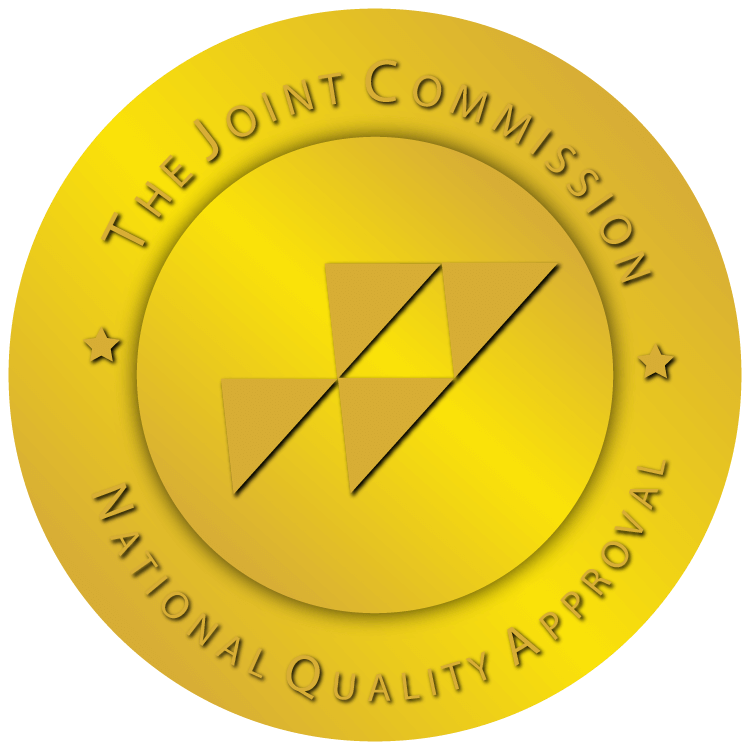Alcohol withdrawal symptoms can be serious and even life-threatening for people who have been drinking heavily over a long period.
Alcohol withdrawal occurs when someone suddenly stops or greatly reduces their alcohol use after becoming dependent on it. Symptoms may begin within a few hours to a few days. In some cases, the symptoms can be so intense that they interfere with daily life, work, or relationships. Understanding these symptoms and knowing when to get help is an important step toward safe recovery.

What Happens During Each Phase of Alcohol Withdrawal
It is estimated that 2 million Americans experience the symptoms of alcohol withdrawal each year.1 This number shows that alcohol withdrawal is a common medical issue and stresses the importance of understanding and treating it properly.
Research confirms the 4-step progression along with the physical, mental, and emotional effects of withdrawal: minor symptoms – hallucinations – seizures – delirium tremens.
See below what occurs in each phase:
Phase 1: Minor Withdrawal (6–12 hours after last drink)
This first phase begins within hours after stopping alcohol and includes the earliest physical and emotional symptoms.
- Physical signs: Shakiness (“tremors”), trouble sleeping, sweating, upset stomach, headache, fast heartbeat.
- Mental/emotional signs: Feeling nervous or anxious.
- Why it happens: Alcohol boosts the calming effects of γ-amino-butyric acid (GABA), a brain chemical that slows activity. Over time, the brain adjusts by responding less to GABA, which is why people develop a tolerance to alcohol.1
Phase 2: Possible Alcoholic Hallucinosis (12–24 hours)
Alcoholic hallucinosis is a rare complication of alcohol withdrawal that involves vivid hallucinations without confusion or clouded thinking. It usually appears within a day after the last drink and can be very distressing for the person experiencing it.
- What occurs: People may have hallucinations – seeing, hearing, feeling, or even smelling things that aren’t there.
- Other physical effects: More tremors, sweating, anxiety, stomach issues.
- Mental impact: Increased fear, confusion, and possibly paranoia. About 5–20% of cases later develop schizophrenia, especially if there’s a family history of psychosis.2
Phase 3: Withdrawal Seizures (6–48 hours)
Withdrawal seizures are sudden, uncontrolled electrical disturbances in the brain that can occur when the body reacts to the absence of alcohol.
- What can happen: Suddenly stopping alcohol after heavy use can cause withdrawal seizures. The most serious type is generalized tonic-clonic seizures that can often occur in groups.3
- Warning signs: Severe shakiness, high blood pressure, fast pulse, fever.
- Emotional impact: Feeling scared, nervous, and worried about more seizures.
Phase 4: Delirium Tremens (DTs) (24–72 hours, sometimes up to 10 days)
Delirium tremens (DT) is the most severe stage of alcohol withdrawal and can be life-threatening if not treated quickly. It usually happens in people who have been drinking heavily for a long time and suddenly stop or cut back. DT is hard to diagnose and manage, making it a serious medical emergency.
- Physical problems: High fever, heavy sweating, very fast heartbeat, high blood pressure, severe tremors.
- Mental/emotional effects: Extreme confusion, disorientation, scary hallucinations, feeling agitated or terrified.
- Danger level: This is life-threatening and needs hospital care, often in the ICU.
- Who’s at risk: Regular heavy drinkers, older people, past withdrawals, or existing health issues.4
Understanding each phase of alcohol withdrawal helps you know what to expect and how to manage it to make the process safer and more comfortable.
Coping with Withdrawal
According to the National Institute on Alcohol Abuse and Alcoholism (NIAAA), heavy drinking means:6
- For men: 5 or more drinks in a day, or 15 or more drinks in a week
- For women: 4 or more drinks in a day, or 8 or more drinks in a week
This means that drinking large amounts of alcohol regularly puts you at a higher risk for developing alcohol dependence and withdrawal symptoms if you suddenly stop.
Here are some ways to cope with withdrawal safely:
- Don’t go through it alone – Talk to a doctor or seek medical help, especially if you’ve had severe symptoms before.
- Stay hydrated – Drink water and clear fluids to support your body.
- Get rest – Your body and brain need time to recover, so sleep is important.
- Eat light, healthy meals – Even if you don’t feel hungry, small meals can help stabilize your energy.
- Limit exposure to relapse risks – Stay away from places, people, or situations that make you want to drink.
- Consider medications – Doctors may prescribe medicines to reduce anxiety, stop seizures, or help you sleep.
- Join a support group – Talking to others who’ve been through withdrawal can give you strength and encouragement.
If withdrawal symptoms become severe or scary, go to a hospital immediately. Medical detox can provide 24/7 care to keep you safe during the process. Withdrawal is temporary, but getting through it the right way can be the first strong step toward recovery.
When to Seek Medical Support
As mentioned above, some symptoms that include shaking and anxiety may be mild and manageable at home. But others can be life-threatening and need emergency care.
You should seek medical help right away if you experience any of the following:
- Seizures
- Severe confusion or disorientation
- High fever or rapid heartbeat
- Hallucinations and DTs
- Feeling very agitated, panicked, or paranoid
Medical professionals can monitor your health, give you medication to ease symptoms, and keep you safe.
If you or someone you care about is struggling with alcohol withdrawal or addiction, help is available.
Contact South Coast Counseling to learn about safe detox options, recovery support, and compassionate care. Getting help early can save a life.

Sources:
- Bayard, M., Mcintyre, J., Hill, K. R., & Woodside, J. (2004). Alcohol Withdrawal Syndrome. American Family Physician, 69(6), 1443–1450. https://www.aafp.org/pubs/afp/issues/2004/0315/p1443.html/
- Alcoholic Hallucinosis – an overview | ScienceDirect Topics. (n.d.). Www.sciencedirect.com. https://www.sciencedirect.com/topics/neuroscience/alcoholic-hallucinosis
- Rogawski, M. A. (2005). Update on the Neurobiology of Alcohol Withdrawal Seizures. Epilepsy Currents, 5(6), 225–230. https://doi.org/10.1111/j.1535-7511.2005.00071.x
- Kaye, A. D., Staser, A. N., Mccollins, T. S., Zheng, J., Berry, F. A., Burroughs, C. R., Heisler, M., Aya Mouhaffel, Shahab Ahmadzadeh, Kaye, A. M., Sahar Shekoohi, & Giustino Varrassi. (2024). Delirium Tremens: A Review of Clinical Studies. Curēus, 16(4). https://doi.org/10.7759/cureus.57601
- Bayard, M., McIntyre, J., Hill, K. R., & Woodside, J. (2004). Alcohol withdrawal syndrome. American Family Physician, 69(6), 1443–1450. https://pubmed.ncbi.nlm.nih.gov/15053409/
- National Institute on Alcohol Abuse and Alcoholism. (2024). Understanding alcohol drinking patterns | National Institute on Alcohol Abuse and Alcoholism (NIAAA). nih.gov. https://www.niaaa.nih.gov/alcohols-effects-health/alcohol-drinking-patterns












